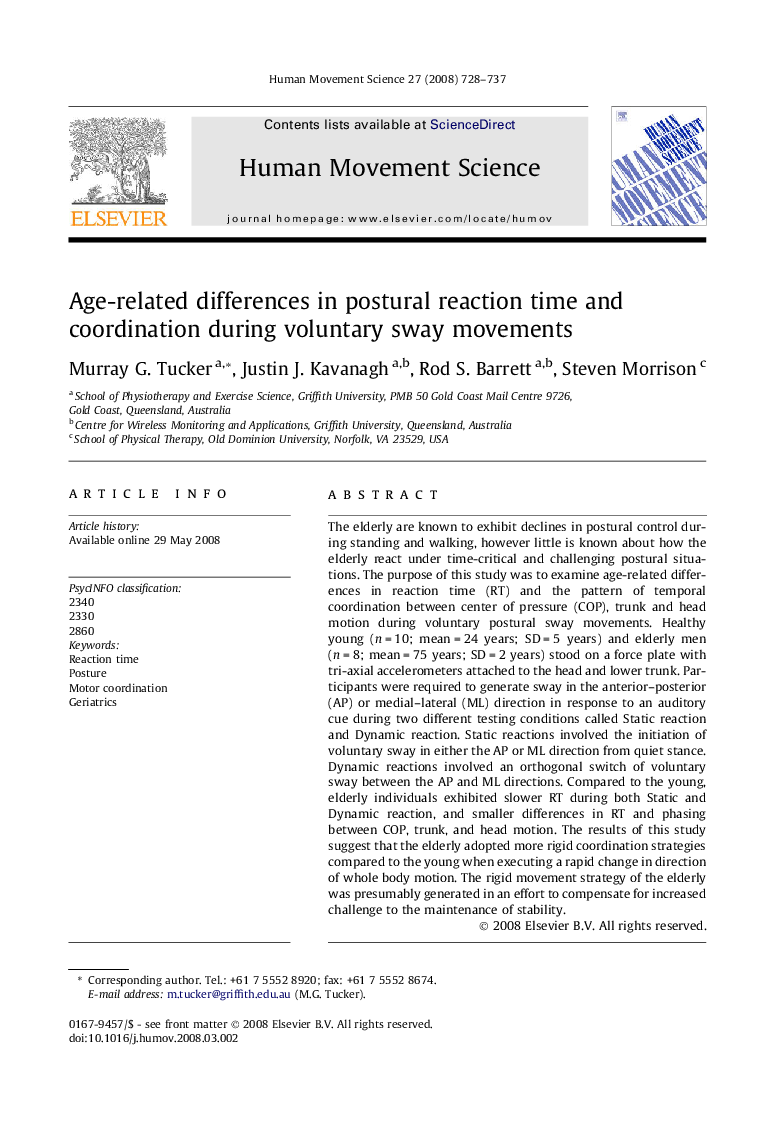| Article ID | Journal | Published Year | Pages | File Type |
|---|---|---|---|---|
| 928887 | Human Movement Science | 2008 | 10 Pages |
The elderly are known to exhibit declines in postural control during standing and walking, however little is known about how the elderly react under time-critical and challenging postural situations. The purpose of this study was to examine age-related differences in reaction time (RT) and the pattern of temporal coordination between center of pressure (COP), trunk and head motion during voluntary postural sway movements. Healthy young (n = 10; mean = 24 years; SD = 5 years) and elderly men (n = 8; mean = 75 years; SD = 2 years) stood on a force plate with tri-axial accelerometers attached to the head and lower trunk. Participants were required to generate sway in the anterior–posterior (AP) or medial–lateral (ML) direction in response to an auditory cue during two different testing conditions called Static reaction and Dynamic reaction. Static reactions involved the initiation of voluntary sway in either the AP or ML direction from quiet stance. Dynamic reactions involved an orthogonal switch of voluntary sway between the AP and ML directions. Compared to the young, elderly individuals exhibited slower RT during both Static and Dynamic reaction, and smaller differences in RT and phasing between COP, trunk, and head motion. The results of this study suggest that the elderly adopted more rigid coordination strategies compared to the young when executing a rapid change in direction of whole body motion. The rigid movement strategy of the elderly was presumably generated in an effort to compensate for increased challenge to the maintenance of stability.
